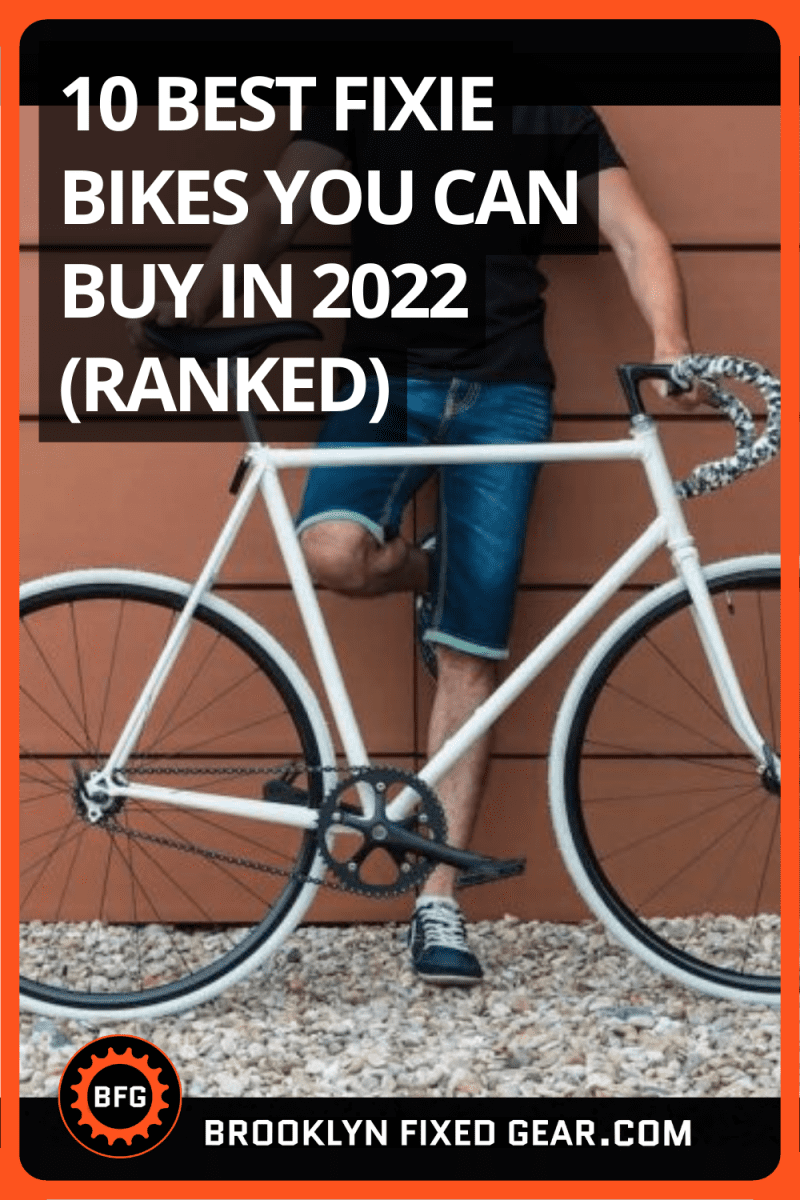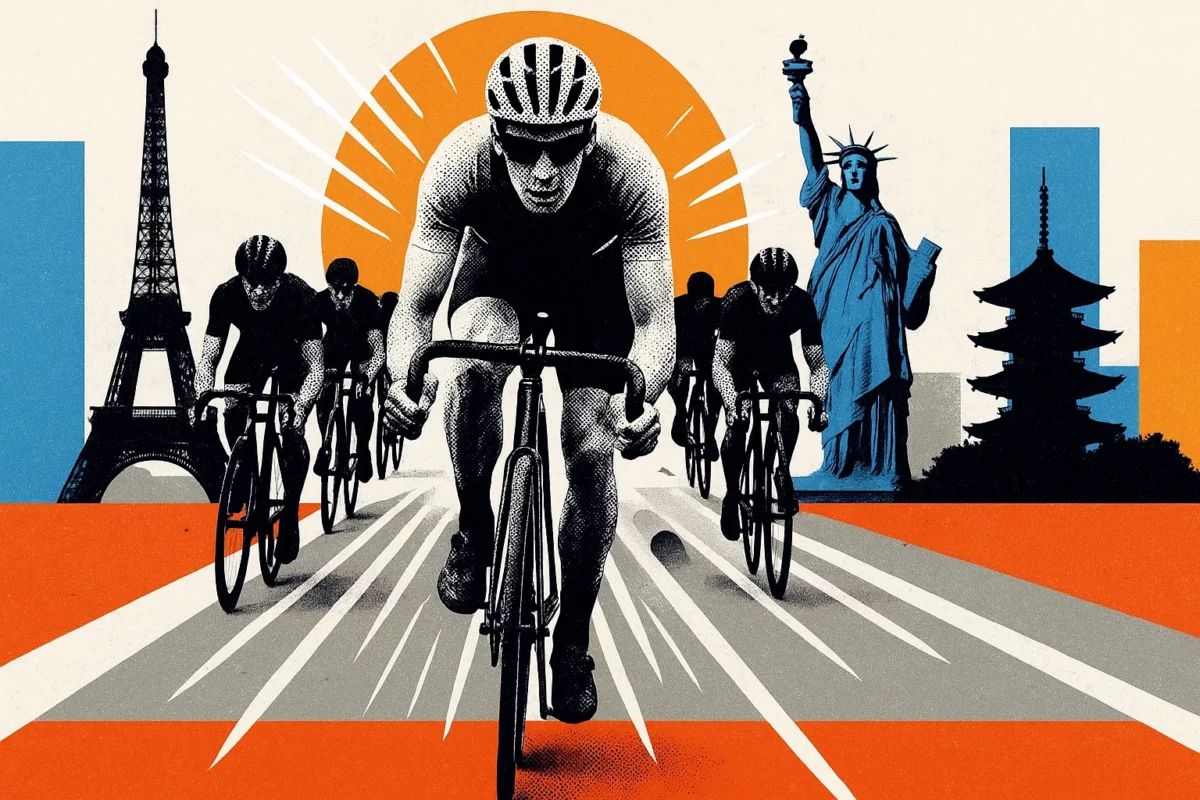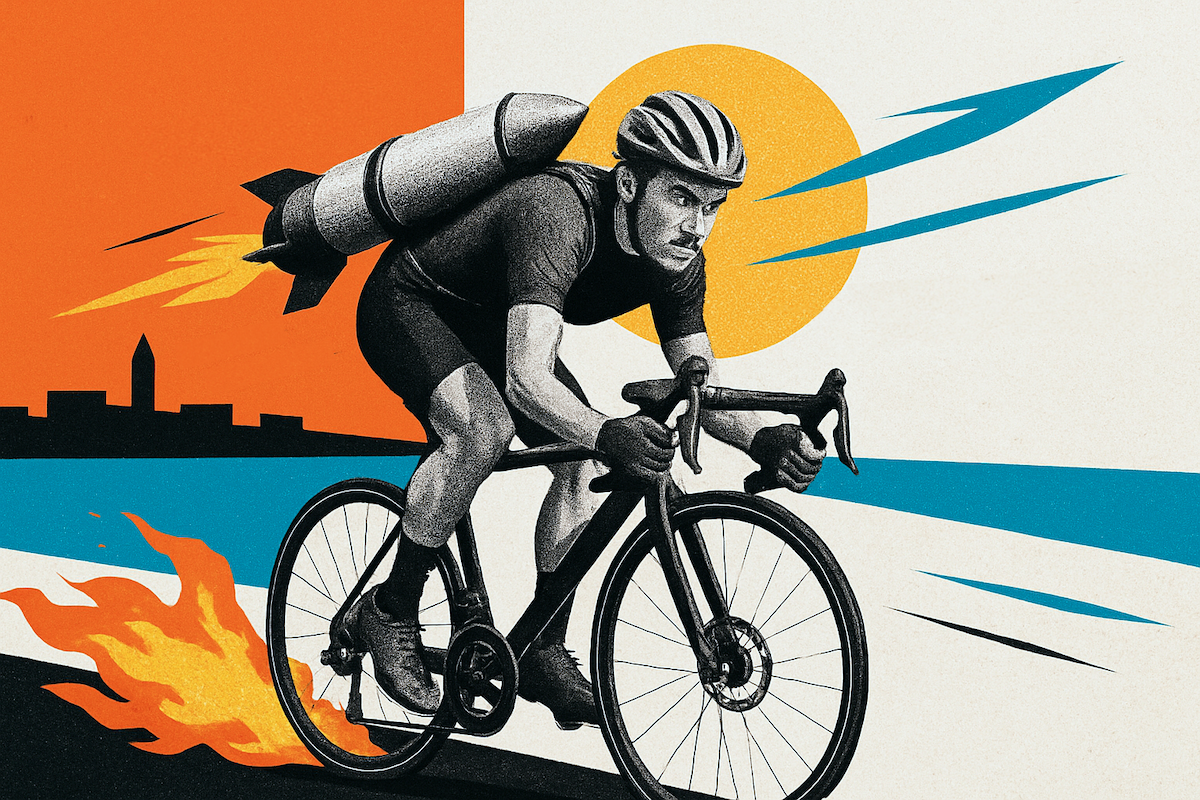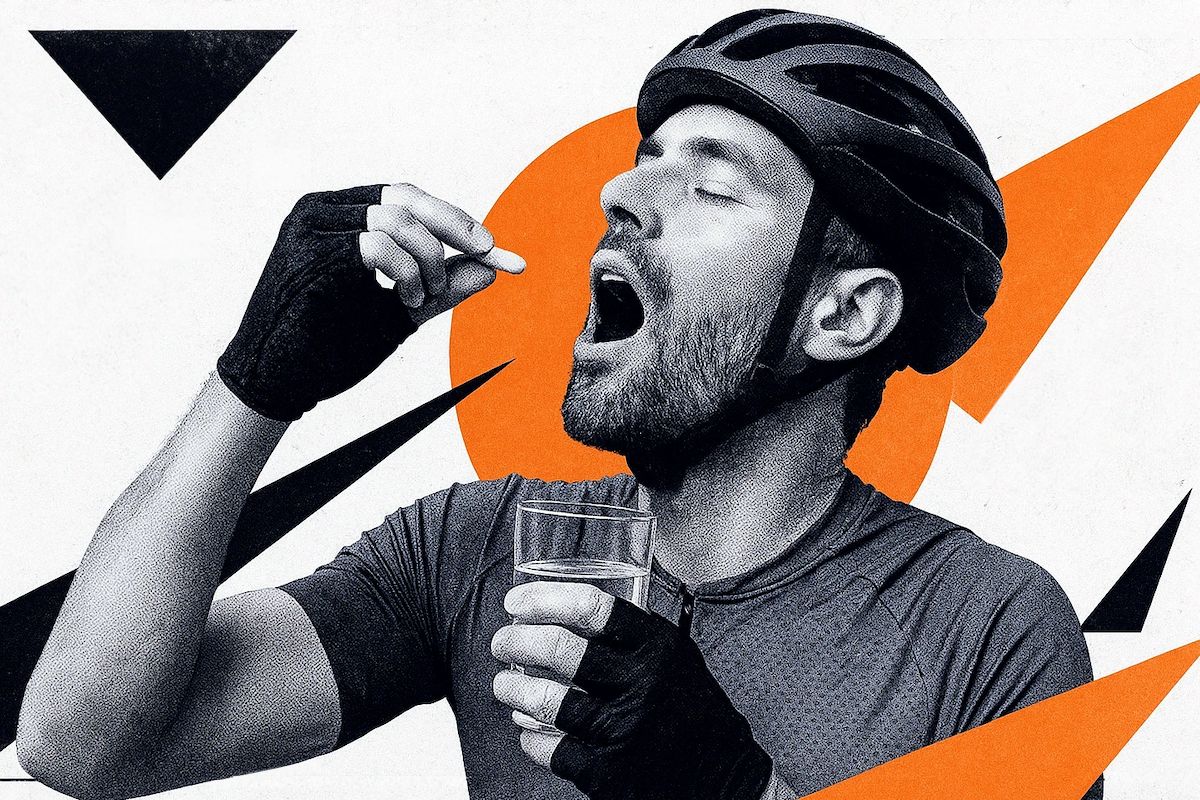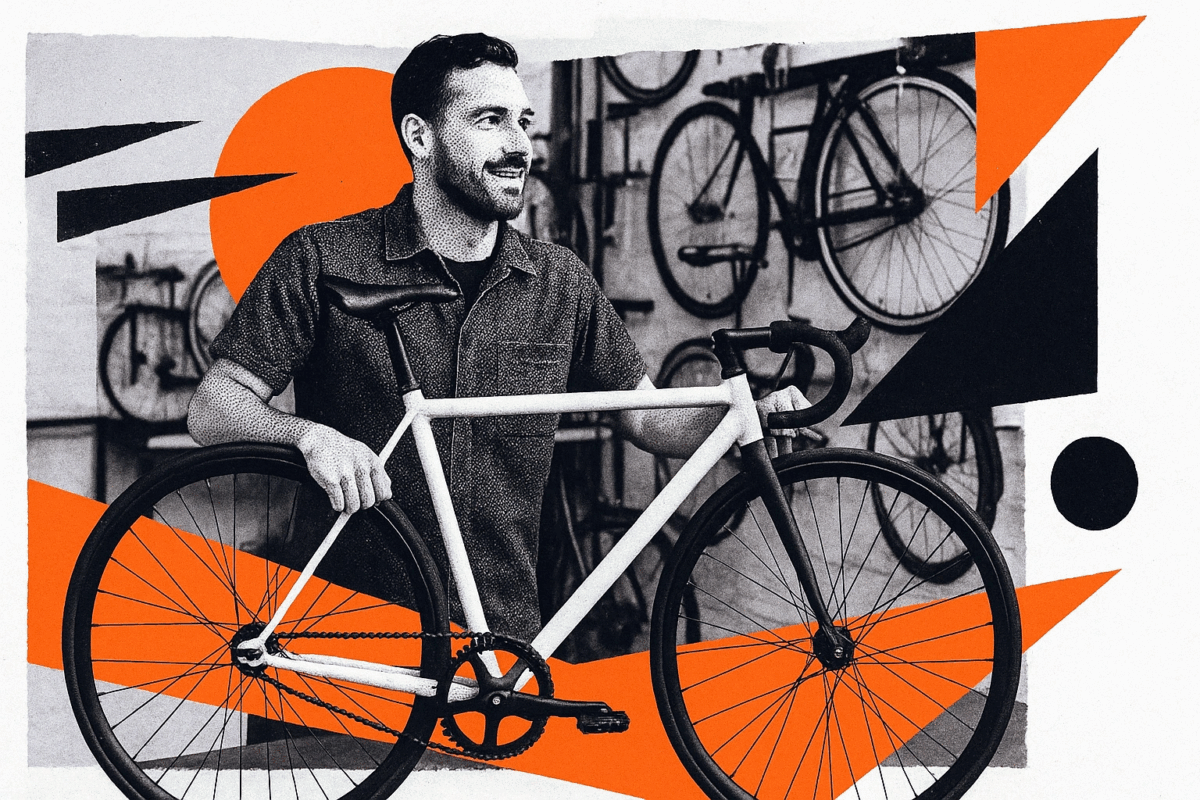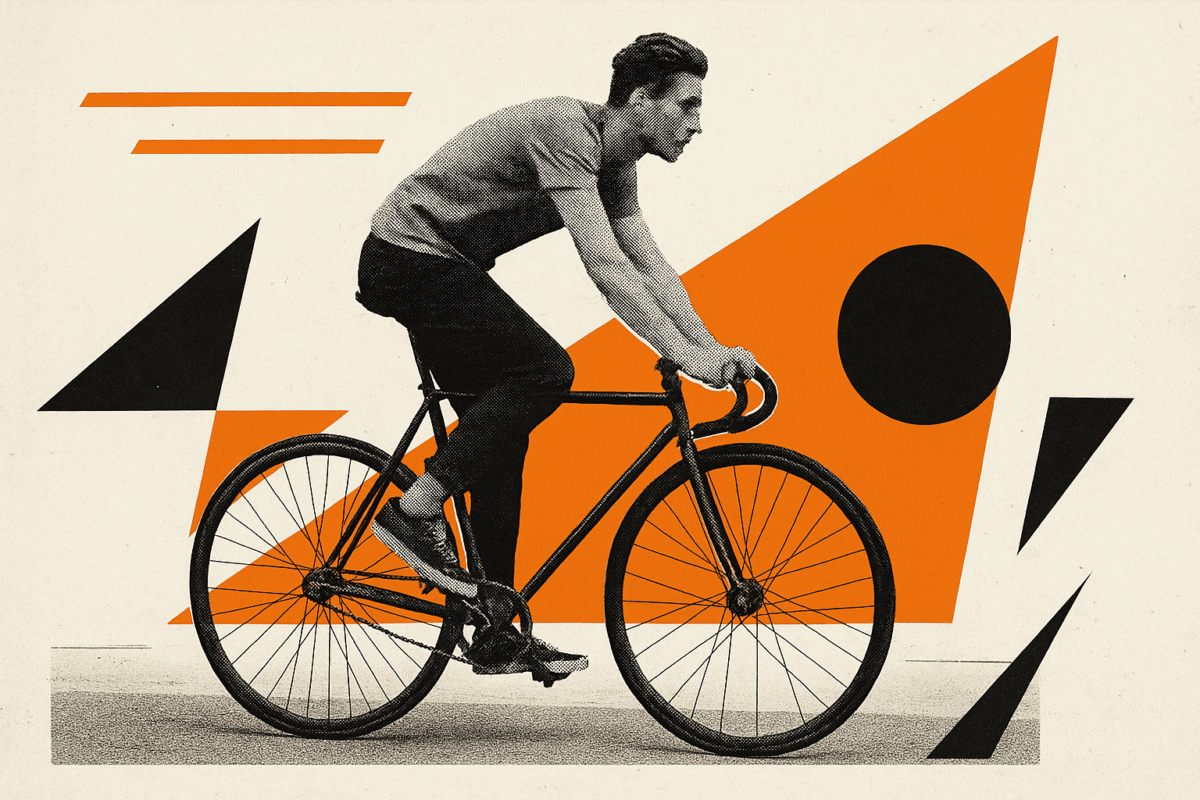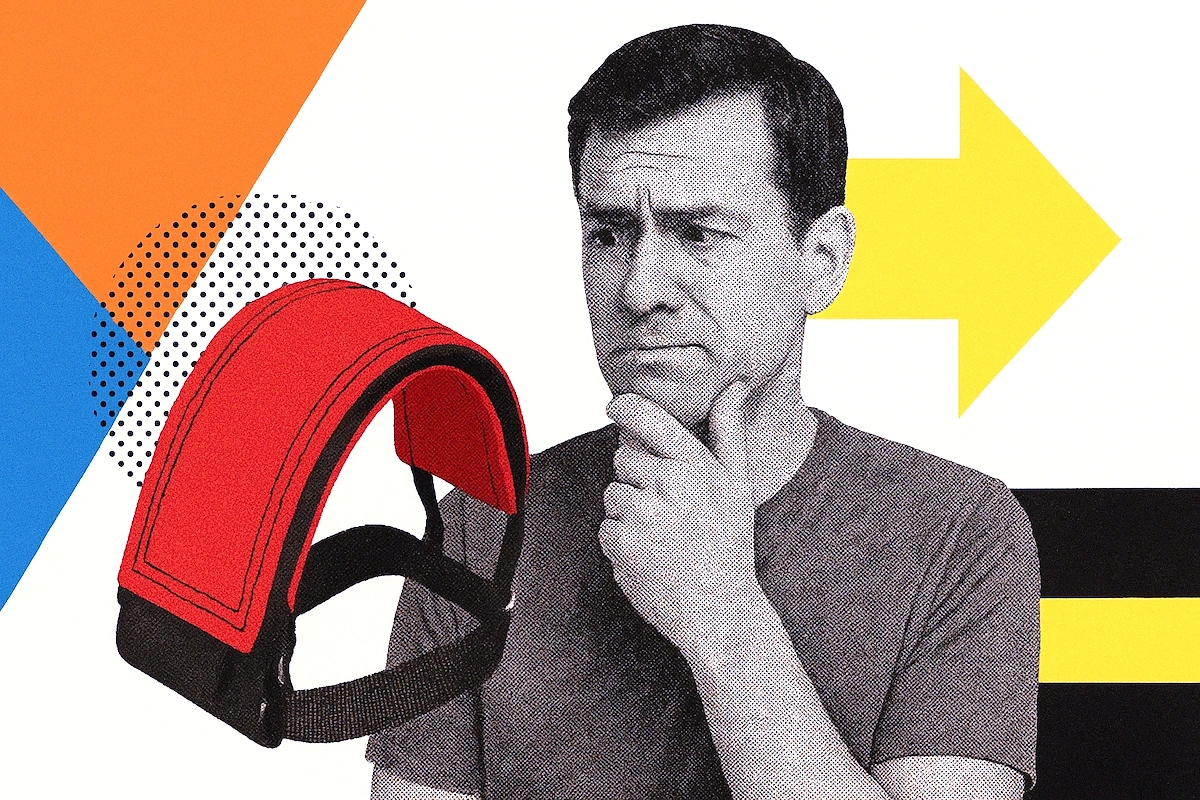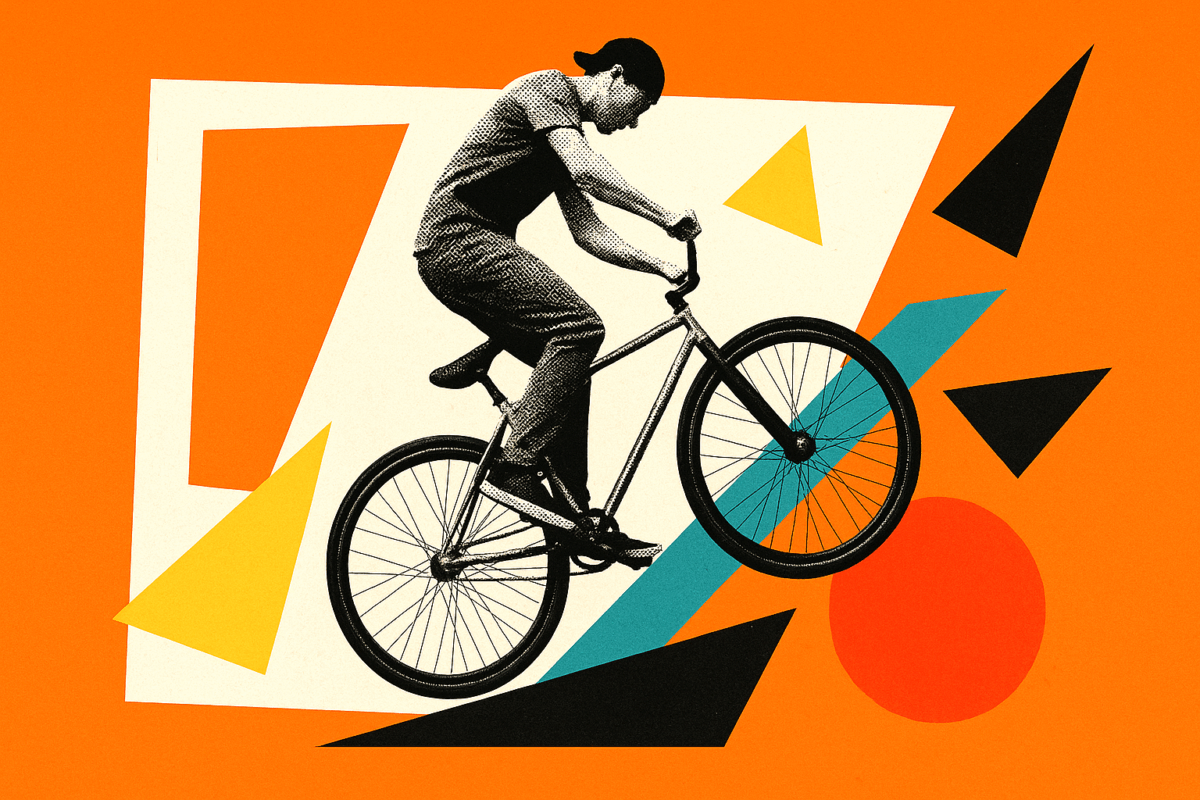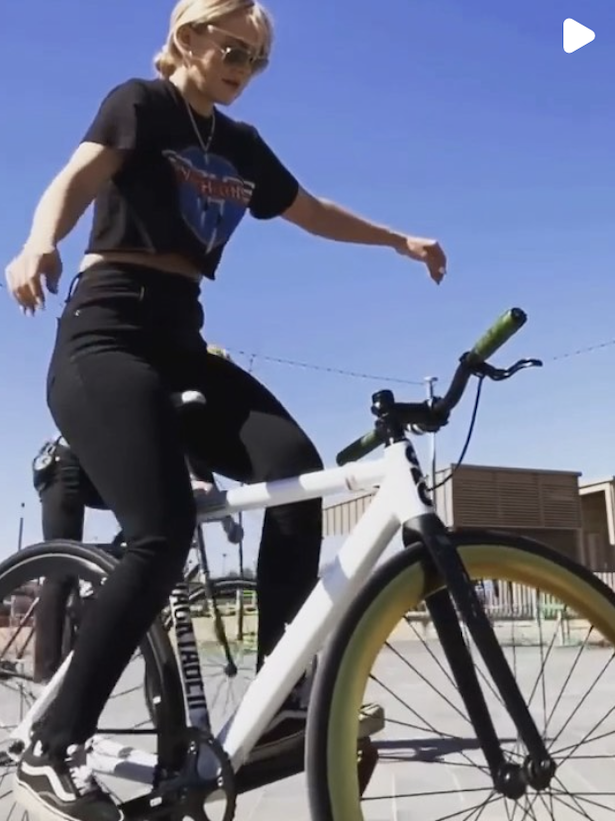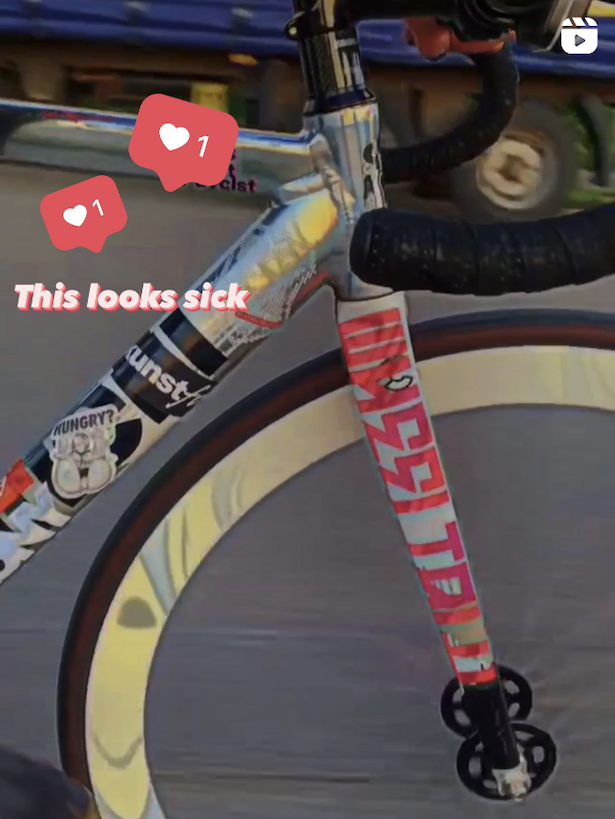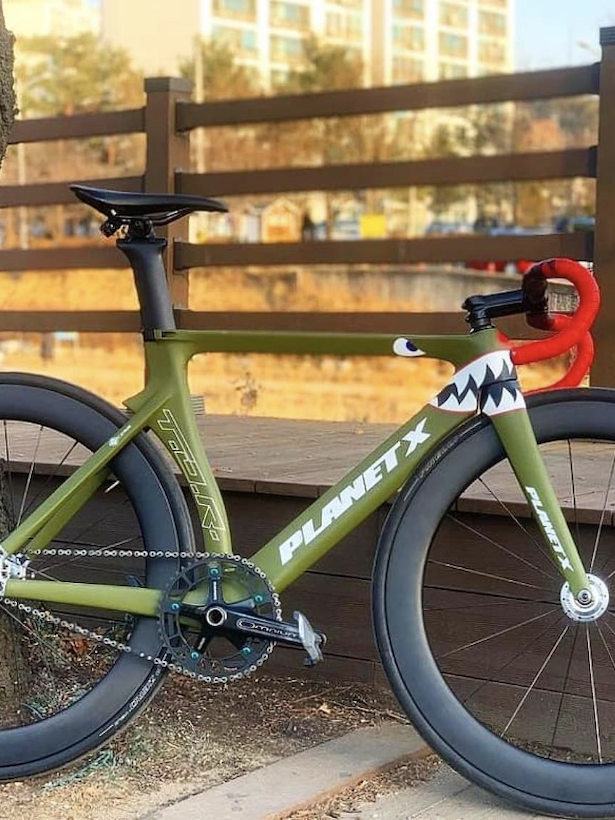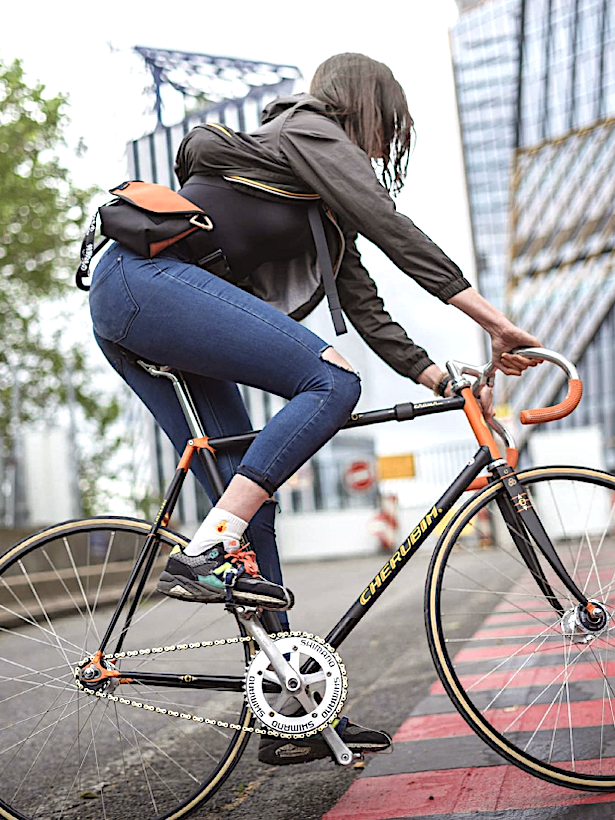
Most beginner fixed gear riders pick the wrong fixie because they either gamble on sketchy quality control to save $200, or they overspend on track-specific geometry they can’t handle yet 🚴.
This inst the typical 10+ list that leaves you more confused than when you started. I’m giving you exactly three bikes that work for beginners—each serving a different budget and commitment level.
Most Reliable
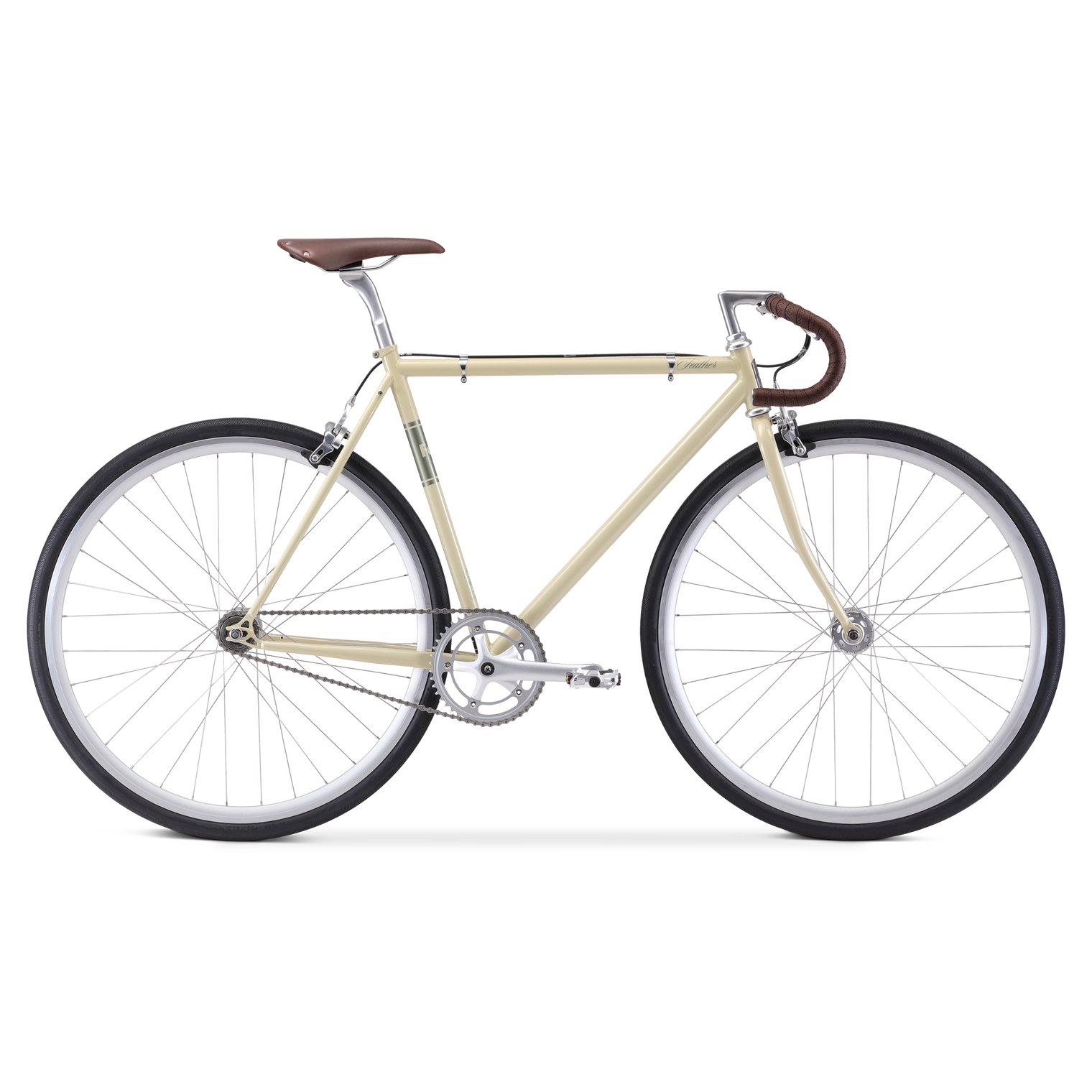
Fuji Feather
5/5
Frame: Reynolds 520
Weight: 21–22 lbs
Gearing: 46×16 (75″)
QC: Excellent
Premium Build Quality
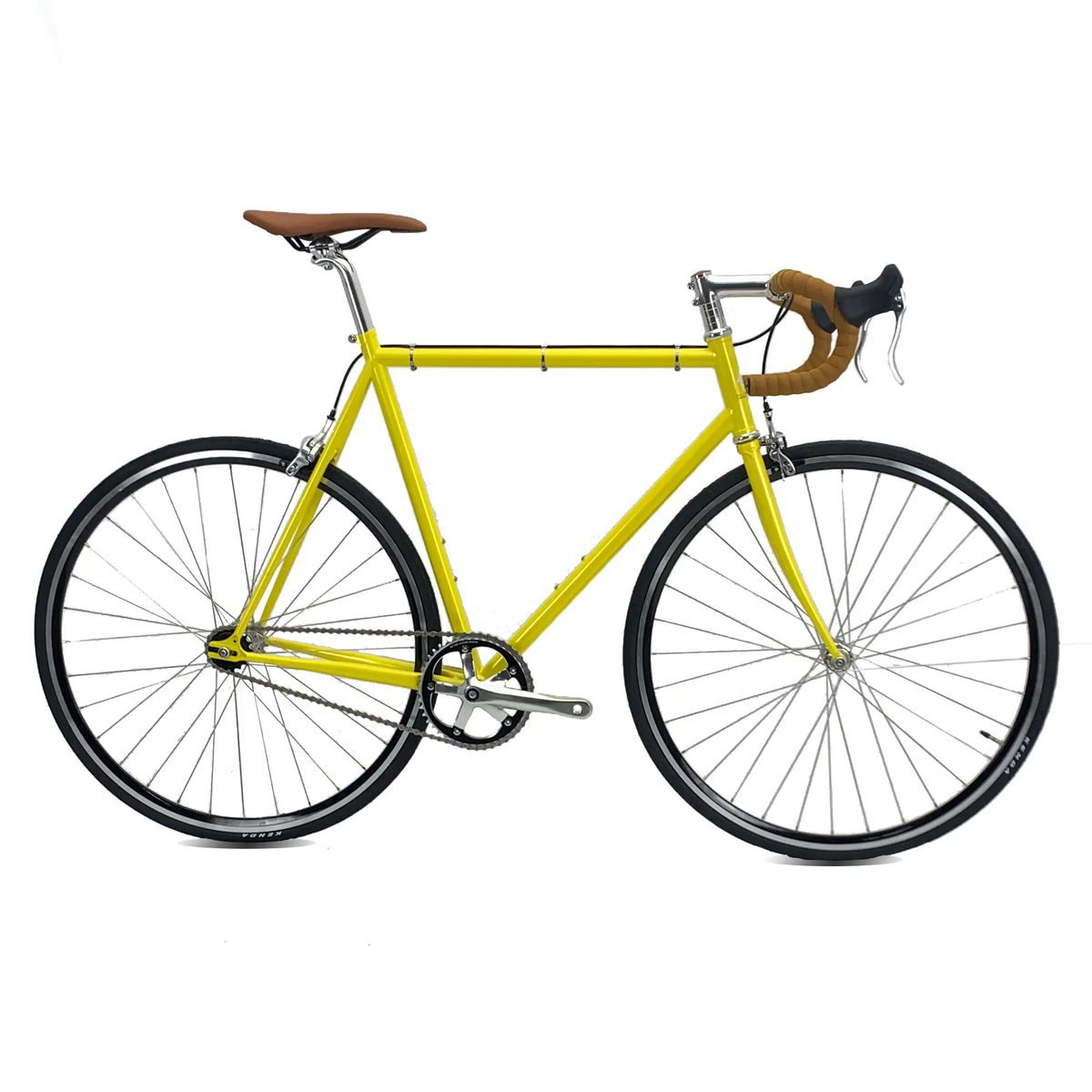
Wabi Classic
4.5/5
Frame: Reynolds 725
Weight: 18–19 lbs
Gearing: 46×18 (67″)
QC: Excellent
Budget-Friendly

State Core-Line
3/5
Frame: Hi-Tensile Steel
Weight: 22–25 lbs
Gearing: 44×16 (72″)
QC: Good
TL;DR:
- State Core-Line delivers the cheapest entry at $450, but documented quality control problems mean you’re gambling
- Fuji Feather offers proven Reynolds 520 chromoly reliability at $700 MSRP, but the real value is finding it on clearance for $400-500 at local bike shops clearing inventory
- Wabi Classic costs $850 but gives you Reynolds 725 heat-treated steel and sub-19 pound weight typically found in $1,500+ custom builds
- All three include flip-flop hubs and brakes
| Feature | State Core-Line | Fuji Feather | Wabi Classic |
|---|---|---|---|
| Frame Material | Hi-tensile steel | Reynolds 520 chromoly | Reynolds 725 heat-treated chromoly |
| Weight | 23-25 lbs | 20-24 lbs | 18-19 lbs |
| Price | $450 | $700 ($400-500 sale) | $850 |
| Gearing | 44×16 (73″) | 46×16 (78″) | 46×18 (69″, customizable) |
| QC Reputation | Inconsistent/risky | Excellent | Good (post-2016 mixed) |
| Best For | Budget experimenters | Value-conscious commuters | Serious long-term riders |
Best Beginner Fixed Gear Bikes 2025
1.
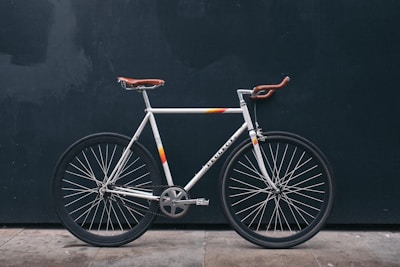
Most reliable option
Fuji Feather
5/5
2.

Premium build quality
Wabi Classic
4.5/5
3.
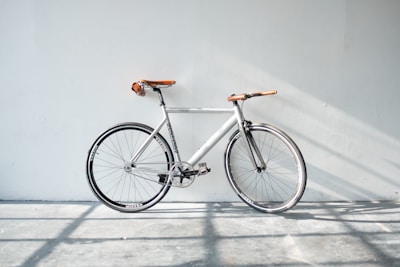
Budget-friendly
State Core-Line
3/5
3. State Bicycle Core-Line: The $450 Gamble
The State Bicycle Co. Core-Line hits the magic $450 price point ($449.99 for 2025) that makes beginners think “I’ll try this without breaking the bank.” When the bike arrives in good shape, you’re getting solid value.
The hi-tensile steel frame rides smooth, the flip-flop hub lets you practice on freewheel before committing to fixed, and the deep-V wheels look expensive.
But from what i’v herd, State’s quality control is a lottery. Fixed gear expert Zach Gallardo received a review bike bent out of alignment. This pattern repeats across BikeRide reviews, Reddit threads, and forum complaints for years.
However, I purchased a State bike (from their website) and I received it in imperfect conditions. I got my 6061 black label and still ride it today. No issues. And it arrived perfectly fine, so take the nay-sayers with a grain of salt.

What works 👍
- Lowest upfront cost – At $450, this is the cheapest legitimate entry point for fixed gear bikes.
- Steel ride quality – The hi-tensile frame absorbs road chatter beautifully for comfortable rides.
- Flip-flop convenience – Easy switching between fixed and freewheel modes in about 3 minutes.
- Better hubs than expected – Sealed-bearing high-flange hubs outperform Fuji’s ball bearings.
Critical problems 👎
- Inconsistent QC – Documented quality control lottery with bent frames, out-of-true wheels, and missing parts.
- Heavy weight – 23-25 pounds complete is roughly 30% heavier than chromoly alternatives.
- Aggressive gearing – 44×16 ratio punishes on hills until you swap cogs.
- Warranty catch – Requires professional assembly/inspection ($100-200) to maintain validity.
What You Actually Get
The hi-tensile steel frame weighs 23-25 pounds complete—roughly 30% heavier than chromoly alternatives. The flip-flop hub ships with both 16T freewheel and fixed cog. The 44×16 gear ratio (about 73 gear inches) works on flats but punishes beginners on hills.
Most riders immediately swap to a 17T or 18T rear cog ($15-30) for tolerable climbing. Understanding gear ratios on fixed gear bikes helps determine if this gearing fits your terrain.
The bike includes dual-pivot caliper brakes, sealed-bearing high-flange hubs (better than Fuji’s ball bearings), and Cult x Vans “waffle pattern” grips.
The stock pedals are garbage—budget $30-50 minimum for replacements. Four frame sizes cover riders from 5’0″ to 6’5″: Small (50cm), Medium (54cm), Large (58cm), and XL (62cm).

Warning…
State’s warranty requires professional assembly or inspection to stay valid. That’s an extra $100-200 at local bike shops, transforming your “$450 bike” into a $650 reality before you even add pedals, lock, and lights.
The Quality Control Problem
State’s problems aren’t theoretical—they’re documented across years of reviews. Bicycling Magazine field tests and BikeRide user reviews reveal consistent issues: bent frames, wheels requiring immediate truing, components overtightened without grease causing seized bolts, missing hardware, and damaged packaging.
One buyer wrote:
“Nice bike but wheels needed spokes tightened and wheel trued right out of the box. Everything was built without grease and tightened by Hercules.”
Here’s what makes State frustrating: some people get perfect bikes and ride for years with zero issues. It’s not consistently bad—it’s inconsistently assembled. Like me! Mine came in just fine.
Buy State Core-Line If:
- Genuinely budget-limited to $600 total
- Buying from local shop that can inspect first
- Testing fixed gear before long-term commitment
- Riding mostly flat terrain under 10 miles daily
- Comfortable with bike maintenance basics
- Can tolerate QC gamble for substantial savings
Skip State If:
- Can stretch budget to $500-700 for Fuji on sale
- Risk-averse about defects and customer service
- Ride hills daily requiring lighter weight
- Need lightweight for frequent stair-carrying
- Want reliability over price savings
- Prefer established quality control and warranty support
Smart Buying Strategy
Only buy State bikes through local bike shops that inspect before sale. The $100-200 assembly cost eliminates the QC lottery because shops verify frame alignment, wheel trueness, proper greasing, and correct torque. You’re buying insurance against defects and remote customer service nightmares.
Think of it this way: spending $600 total ($450 bike + $150 assembly) through a local shop gets you a functional bike immediately. Spending $450 online might save money or cost you weeks of frustration and return shipping.
Think about how much it will cost you to ship back that bike!
2. Fuji Feather: The Boring Bike Nobody Regrets
The Fuji Feather earns its “boring but reliable” reputation through years of zero-drama performance.
With a Reynolds 520 chromoly steel frame, this bike is the safest investment for beginners at $699 MSRP (2025)—but here’s the insider secret: smart buyers find it on clearance for $400-500 at local shops, transforming it from “good value” to “exceptional deal.”

Why it’s reliable 👍
- Zero regrets reputation – “Boring but works” consensus across years of forum discussions and reviews.
- Reynolds 520 ride quality – Double-butted chromoly provides classic steel comfort that absorbs road vibrations beautifully.
- Sale price value – Clearance deals at $400-500 make this an exceptional bargain for the frame quality.
- Proven longevity – Riders consistently report years of reliable performance with minimal maintenance.
Design limitations 👎
- Extremely short seatpost – Critical sizing issue with virtually no height adjustment—wrong size means unusable bike.
- Heavy stock wheels – Functional but uninspiring wheelset becomes common first upgrade.
- Cheap cog and lockring – Stock drivetrain components warrant immediate $20-40 replacement.
- No water bottle mounts – Track-style frame omits braze-ons, requiring alternative mounting solutions.
Why “Boring” Means Perfect
The Feather lacks Instagram-worthy deep-dish wheels or exotic components, but delivers what beginners actually need: transportation that works every single day for years.
A CycleChat user captured it perfectly: “I bought this Fuji Feather new a few years ago, it rode really nicely and is another one I regret selling.” That sentiment—you don’t appreciate the Feather until it’s gone—appears constantly across forums.

Did you know?
Fuji releases a “new” Feather model every year that’s basically the exact same bike with different colors. This creates clearance opportunities where previous year models get discounted 30-40% when new colors arrive—that’s how you score the $400-500 sale price.
Key Specs and Reynolds 520 Steel
The Reynolds 520 chromoly frame forms the foundation—double-butted tubes (thicker at stress points, thinner in middle) provide the Feather’s signature smooth ride.
Reynolds 520 is 0.30% carbon steel chemistry delivering classic steel vibration absorption for comfortable long rides, durability lasting decades, and the ability to be repaired (won’t crack like aluminum).
Complete spec: Sugino MC Pista crank with 46T chainring, 46/16 gear ratio (78 gear inches) offering balanced city riding—slightly higher than State’s 44/16 but manageable for urban terrain.
Understanding how gear ratios affect performance helps determine if this gearing suits your terrain. Wheels use chromoly axle hubs with sealed bearings and double-wall 32H alloy rims. Tire clearance accommodates up to 30mm+ tires despite 25-28mm official spec—critical for comfortable city riding.
Critical Limitations
The extremely short seatpost represents the Feather’s biggest flaw. BikeRadar warned: “The post is extremely short and offers virtually no movement in height, so you’ll want to make sure you choose wisely when picking a frame size.”
This vintage-style short post sacrifices adjustability for aesthetics—getting the correct frame size is absolutely critical since you can’t compensate with seatpost height.
Stock wheels are functional but heavy (common first upgrade), cheap cog and lockring warrant $20-40 replacement with quality Shimano or EAI components, paint scratches easily, and the frame lacks water bottle mounts requiring alternative solutions.
Fixed gear expert Zach Gallardo reveals the insider secret: shop around at local bike shops for closeout Feathers at $400-500 when new model year colors arrive—transforming this from good deal into exceptional value.
Where to Buy and First Upgrades
Official sources: $699 at FujiBikes.com, also available through City Grounds and most local bike shops. End-of-season sales (fall/winter) and new model releases create clearance opportunities—call multiple shops asking specifically about closeout Feathers.
First upgrades: Quality cog and lockring ($20-40), full bar tape wrap ($15-30), pedals ($30-150) if going clipless, and wheelset upgrade ($200-500) for serious weight savings.
Wabi Classic: Premium Quality at $850
The Wabi Classic delivers Reynolds 725 double-butted, heat-treated chromoly steel with extensive free customization at $850 (standard sizes) or $915 (42cm/650c). This bike provides frame quality found in $1,500+ builds through direct-to-consumer pricing.
2. Wabi Classic

Premium advantages 👍
- Reynolds 725 quality – Heat-treated chromoly provides 50% greater strength than standard 520, enabling sub-19 lb weight.
- Extensive customization – Free build-to-order options for gearing, bars, saddle, stem length ensure perfect fit.
- Exceptional climbing – “Climbing on this bike is a dream” per multiple owner reviews.
- True versatility – Hybrid geometry with rack/fender eyelets enables real commuter functionality.
Considerations 👎
- Post-2016 QC concerns – Mixed reviews about quality control after ownership change from founder Richard Snook.
- Stock component quality – Some high-mileage riders report needing drivetrain/wheel upgrades after 4,000-10,000 miles.
- Frame stiffness limits – Small-diameter tubing prioritizes comfort over maximum stiffness for hard sprinting.
- Build-to-order wait – 10+ business days for standard builds (3+ weeks for custom colors).
The hybrid track/road geometry provides relaxed but responsive handling, with eyelets for fenders and racks enabling true commuter versatility—this isn’t a track-only frame pretending to work on streets.
Reynolds 725: The Engineering Advantage
Reynolds 725 starts as 0.30% carbon steel chemistry but undergoes heat treatment for 50% greater strength than Reynolds 520 according to Reynolds Technology.
This allows significantly thinner tube walls while maintaining superior strength—enabling the Wabi Classic’s sub-19 pound complete weight. Industry Outsider verified 18.4 pounds (55cm, no pedals). That’s 3-4 pounds lighter than the Fuji Feather and 5-6 pounds lighter than the State Core-Line—you feel that difference carrying the bike upstairs, accelerating from stops, and climbing hills.
The technical benefits: more resistant to denting than non-heat-treated chromoly, superior fatigue performance for long-term durability, classic “springy” ride quality steel enthusiasts prize, and weight comparable to aluminum frames while maintaining steel’s comfort.
Complete Specs and Free Customization
Hand TIG-welded Reynolds 725 frame and fork (frame plus fork: 5.6-5.7 pounds). Standard components include 32-spoke, 700c wheels with sealed-bearing flip-flop hubs weighing 1,725 grams—widely praised as “fantastic” in forums.
Cold-forged alloy 170mm crankset uses 144BCD with 46T chainring, paired with 18T freewheel and fixed cog for balanced 46/18 gearing. Tire clearance up to 32mm with 700C x 28mm Kenda tires standard.
Free customization distinguishes Wabi: Every bike is built-to-order with extensive no-charge options including component colors, five handlebar styles, three saddle types, custom gear ratios, stem length (80-130mm), bar width, crank arm length (165/170/175mm), fixed versus freewheel setup, and brake configuration. Want that perfect fixed gear setup? You can spec it without paying extra.
Paid upgrades include Brooks saddles, Sugino cranksets, SRAM components, Phil Wood hubs, and lighter wheelsets.

Pro Tip
Check Wabi’s “Imperfects” section for $50 discounts on frames with minor cosmetic imperfections (pinprick indentations, minor paint issues) that don’t affect performance—excellent opportunity for budget-conscious buyers to get premium Reynolds 725 quality.
Owner Experience: “Zero Regrets”
A TwoSpoke Forums user documented their initial 27-mile ride: “The Wabi rode better than hoped for. As smooth or maybe smoother than my Ti LiteSpeed. Have not ridden a bike that accelerate this well on the flats since the Bianchi days yet rides so smooth.”
Their six-week, 600-mile review: “Initial impressions have not changed much. The more miles put on the Wabi Classic the more I’m impressed…Hit a pothole at +30mph…Wabi & I stayed in control…The 32 spoke stock wheels took the impact without issue.”
Climbing performance particularly impresses: “Climbing on this bike is a dream come true…This bike efficiently transfers every watt of power into forward momentum.”
A Trustpilot reviewer toured from Alaska to Mexico on a Wabi Classic: “I have been riding a Wabi for four years and I have never missed my gears. I even rode my Wabi classic on a tour from Alaska to Mexico. People said it couldn’t be done, but the Wabi pulled through splendidly!”
Critical Considerations
Post-Richard Snook quality control concerns appear in some reviews. Richard Snook founded Wabi Cycles in 2009 but sold the company in May 2016.
A Trustpilot user who purchased four Wabis noted quality differences: “The bike itself is incredible…One from Richard the original owner of the company with no issues but with 2 of the 3 from Matt and Curt I had issues…”
Stock component durability generates mixed feedback. A BikeForums.net user documented 10,000 miles: “The stock components aren’t very good. I had a rear wheel failure at barely 4,000 miles, and the drivetrain components aren’t really suited for high mileage riders.” He concluded the frame quality justifies buying frameset and building with quality components.
Frame stiffness limitations: BikeRadar noted “the small-diameter tubes aren’t that stiff when you’re hammering out of the saddle.” Reynolds 725 small-diameter tubing prioritizes comfort over maximum stiffness, making this less ideal for competitive track use.
Buy Wabi Classic If:
- Committed to fixed gear long-term (not experimenting)
- Can invest $850 upfront with confidence
- Lightweight matters (stairs, transit, hills)
- Appreciate extensive customization and build-to-order
- Prize premium frame quality over budget constraints
- Plan to keep bike 5-10+ years
Skip Wabi Classic If:
- Budget maxes at $700
- Need immediate local shop availability
- Prefer generic off-rack purchasing without customization
- Still experimenting with fixed gear riding
- Can’t wait 2-4 weeks for build and delivery
- Unsure about long-term riding commitment
Build-to-Order Process
Wabi’s direct-to-consumer model: select frame size and color, choose from dropdown menus for bars/saddle/components, add free custom requests in “Build Notes” (gear ratios, stem length, bar width, crank length, brake setup), select paid upgrades if desired.
Bikes ship 90%+ assembled within 10 business days for standard builds, requiring only handlebar attachment, front wheel installation, saddle adjustment, and pedal installation. Custom colors add approximately three weeks.
The value proposition centers on Reynolds 725 frame quality typically found in $1,500+ bikes combined with direct-to-consumer pricing.
For beginners serious about fixed gear who want a bike they won’t outgrow, the Wabi Classic costs twice what State offers but delivers significantly better frame material and weight, and provides build-to-order customization other brands charge extra to access.
Which Bike for Your Situation
The Budget-Conscious Experimenter
Buy State if your absolute maximum budget is $650 total (including assembly), you’re uncertain whether fixed gear suits you long-term, a local bike shop near you stocks State and can inspect before sale, you’re mechanically inclined and comfortable with basic maintenance, your commute is mostly flat terrain under 10 miles daily, and you can tolerate the QC gamble for cost savings.
Skip State if you’re risk-averse about defects, you lack access to local shops for inspection, you need absolute reliability for daily commuting, or you can stretch budget to $500-700 for a Fuji on sale.
The Practical Commuter
Buy Fuji Feather if you want proven reliability without drama, your budget reaches $400-700 (actively hunt clearance sales), you’re commuting daily in all weather, you appreciate classic vintage aesthetic, you prefer buying from local shops with service relationships, you’re patient sizing carefully given seatpost limitations, and you value the “boring but works” philosophy—transportation over fashion.
Skip Fuji if you need the lightest possible weight (Wabi 3-4 pounds lighter), you’re between frame sizes (short seatpost doesn’t accommodate mistakes), you want sealed bearings throughout (Fuji uses ball bearings requiring more maintenance), or you prefer modern aggressive aesthetics over vintage styling.
The Serious Enthusiast
Buy Wabi Classic if you’re committed to fixed gear long-term (not experimenting), you can invest $850-915 upfront with confidence, lightweight matters (frequent stair-carrying, transit use, hilly terrain), you appreciate extensive free customization ensuring perfect fit, you prize premium frame quality equaling $1,500+ builds, you’re willing to wait 10+ business days for build-to-order, and you plan to keep this bike for 5-10+ years as your primary ride.
Skip Wabi if budget absolutely maxes at $700, you need immediate availability from local shops, you prefer generic off-the-rack purchasing over consultation and customization, or you’re still experimenting with whether single-speed or fixed gear suits you.

Pro Tip
Start on freewheel mode regardless of which bike you choose. Build confidence and fitness for 2-4 weeks, then flip to fixed gear when ready. This progression dramatically reduces crash risk and intimidation factor.
Beginner Mistakes to Avoid
Buying Without Understanding Flip-Flop Hubs
Beginners order track bikes with dedicated fixed cogs, forcing immediate fixed gear riding without gradual adaptation. Solution: All three recommended bikes include flip-flop hubs allowing easy switching between fixed gear (one side) and freewheel (other side). Start on freewheel mode to acclimate to single-speed riding, practice handling without gears, build leg strength, then flip to fixed when comfortable.
Wrong Frame Size Due to Online Purchasing
Ordering based solely on height charts without considering proportions or test riding causes problems. Critical for Fuji Feather: The extremely short seatpost offers virtually no height adjustment—wrong size means unusable bike. Solution: Test ride at local shops if possible, measure your current bike’s geometry if switching, contact manufacturers directly (especially Wabi) for sizing consultation, and when between sizes, generally size up rather than down.
Underestimating Gearing Difficulty
Beginners don’t realize 44×16 (State) or 46×16 (Fuji) gear ratios can be painfully aggressive for hills or slow-speed maneuvering. Solution: Research your commute terrain and use the gear ratio calculator. Hilly cities benefit from easier gearing—request 46×18 or 46×19 from Wabi, or budget for a larger rear cog ($15-30) and longer chain ($10) to modify State/Fuji. Too-hard gearing discourages riding and risks knee injury.
Ignoring Quality Control When Buying State Online
Ordering State bikes directly online attracted by low price, receiving damaged/defective bikes, then fighting customer service for replacements. Solution: Buy State products exclusively through local bike shops that inspect inventory before sale. This adds $100-200 assembly cost but eliminates the QC lottery because the shop verifies the frame isn’t bent, wheels are true, no parts missing, and proper greasing/torque. You’re buying insurance against a defective unit and remote customer service nightmares.
Not Budgeting for Essential Accessories
Spending entire budget on bike, then lacking money for lock, lights, pedals, or necessary upgrades. Solution: Budget an additional $150-300 minimum: quality U-lock ($60-100), front/rear lights ($30-80), pedals if current ones inadequate ($30-150), basic tools ($40-60), helmet ($40-80). For State specifically, budget extra $50-100 for immediate pedal replacement.
Buying Based Purely on Aesthetics
Choosing bikes for Instagram-worthy looks (deep-dish wheels, exotic paint) over practical features. Solution: Prioritize flip-flop hubs, comfortable geometry, appropriate gearing, tire clearance, and brake reliability. All three recommended bikes offer good aesthetics without sacrificing functionality. Save cosmetic upgrades for after you’ve logged 500+ miles and understand what parts matter most.
What to consider when buying a fixed gear bike (things to look for)
The more you know ahead of time, the more enjoyable your purchase will be. These are the most crucial considerations to make when purchasing a fixed-gear bike.
1. Size
Choosing the right size for your fixed gear bike is crucial. Your steering and pedaling efficiency will suffer if you choose a bike that is either too large or too small for you. Because of the additional control required by fixed gears, selecting the proper size is critical.
Fortunately, most fixed-gear bikes are available in numerous sizes, not just small, medium, or large. Check out our post on choosing a bike to help you pick the right size. Also, check out the bike fit calculator for additional data points.
2. Weight
Fixed gear bikes are known for benign lightweight, but not all are as lightweight as advertised, so make sure to check out the weight specifications. Consider models that weigh 20-22 pounds, have a mid-range gear ratio, and come equipped with a hand brake when you’re shopping for a hefty commuter bike.
You don’t have to categorize yourself in these categories, but it helps to explore your motivations for owning a fixie.
3. Components
A solid comprehension of a fixed gear bike comes from having a proper understanding of its fundamental components. Here are the primary ones you need to be acquainted with.
4. Frame material
It all begins with the frame. Fixed gear bikes often feature a road bike-type frame. This provides the bike some extra reaction and control, which helps with speed and maneuverability too. You’ll experience a lot of bumps and shocks on the road on any bike. The frame material may assist with that.
Steel frames provide a little more comfort and, as you might have imagined, are far stronger than aluminum frames.
Aluminum frames are lighter than steel frames, but they are stiff, and you will feel almost every bump on the road. It’s a trade-off that comes down to personal choice.
5. Drivetrain
The hub and drive train are one of the most significant components. Because a fixed-gear bike is all about that one fixed gear. Sealed hubs are normally recommended since they keep dirt and moisture out and reduce maintenance.
Flip Flop hubs are also a smart idea since they allow you to rotate the wheel over for freewheel riding, which you may occasionally find useful.
The remainder of the drivetrain comprises the front crank and rear cog, the size of which determines the bike’s gear ratio. Larger cranks will have greater top speeds but will accelerate more slowly.
6. Handlebars
The handlebars of a fixie play an important part in defining how it steers and your overall comfort and riding posture. Handlebars that curve upwards on the sides are more comfortable to ride but may not be appealing to everyone.
Shorter handlebars, as well as a flat design, are favored among fixie purists. Bullhorns and drop handlebars (drop bars) are another popular choices, depending on your preferences and riding style.
7. Saddle
The saddle of a fixed gear may vary substantially. Road and racing saddles are quite prevalent, but some riders prefer something cozier, even if it doesn’t seem as stylish.
For the most part, fixed gear bike saddles are road bike saddles. However, some may have a more aggressive form as well. The saddle’s angle adjustment significantly impacts how comfortable it feels for you and your body size.
8. Geometry
Fixed gear bikes are particularly popular for commuting and urban transportation, but their usefulness may go beyond that. Identifying your future bike’s primary function and use might help you pick the one that is perfect for you.
Those who want to ride a fixie more casually about the neighborhood will have more options, as brakeless versions will normally be alright, and the bike’s design and aesthetic receive a bit more attention.
Fitness and training riders who utilize their fixed gear bikes will want a model emphasizing comfort and performance, including improved drivetrain components, reduced weight, and maybe even clipless pedals or holsters.
9. Grips
Fixed gear bike grips provide several opportunities to express your unique design preferences. For example, BMX-style rubber grips are popular among urban riders who want to emulate the appearance of a street fixie. Others like to use taped grips.
Rubber grips will be the most comfortable, but grips are one of the simplest things to replace on a bike, so don’t put too much emphasis on them while purchasing; you can always swap them out later.
Frequently asked questions (FAQ)
To put it simply, a fixed-gear bicycle is a bike with a drive train, or crank, with a fixed drive system to the driven gear, the cog linked to the rear wheel hub. If you turn the crank forward, the wheel will turn forward; if you spin the crank backward, the wheel will move backward.
Thus the drive train does not allow you to change between gears.
Because there is no opportunity to coast or stop pedaling due to the direct drivetrain on a fixed gear, the riding experience will be unlike any other for novice riders. This also implies that the luxury of a regulated ride with handbrakes will be a thing of the past, as your legs will now be not just the engine power but also the stopping force.
Due to consumer safety requirements, most of the bikes on our list will also come equipped with a complete set of hand brakes.
Single-speed bicycles often have a freewheel in the drivetrain, which enables the rider to stop pedaling while moving ahead, known as coasting.
To save your sanity while still enjoying the benefits of a fixed-gear, many of the bikes on this list include ambidextrous rear wheel hubs known as flip-flop hubs, which allow you to swiftly shift to single-speed mode. So if constant pedaling fast isn’t your thing, you can relax your legs and still enjoy a bike
Final Thoughts
The common beginner mistake is buying the absolute cheapest option hoping to “upgrade later”—but most riders either abandon cycling after bad experiences with unreliable cheap bikes, or spend more total money upgrading components than they would have spent buying the better bike initially.
Match your choice to your genuine budget and commitment level rather than purely lowest upfront cost. Start on freewheel mode, build confidence and fitness, then flip to fixed gear when ready. The path from beginner to confident fixed gear rider is more about seat time and practice than equipment—any of these three bikes will serve you well if matched appropriately to your situation.
Which bike are you leaning toward? Drop a comment below and let’s talk through your specific situation.
Sources and references
- State Bicycle Official Site
- Fuji Bikes Official Site
- Wabi Cycles Official Site
- BikeRadar Fuji Feather Review
- Bicycling Magazine State Bicycle Field Test
- Industry Outsider Wabi Classic Review
- Reynolds Technology Steel Specifications
- BikeRide State Core-Line Reviews
- Zach Gallardo YouTube Channel
- BikeForums.net and TwoSpoke.com community feedback
- Various Reddit r/FixedGearBicycle discussions and user reviews
